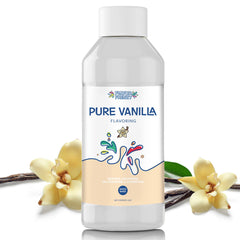Your Cart is Empty
Discover More About Anisole - Flavor Frenzy

Anisole, or methoxybenzene, is a versatile organic compound with a colorless liquid form and a distinctive anise-like aroma. It is widely used in various industries, including perfumery, pharmaceuticals, and manufacturing, due to its utility as a solvent and precursor in fragrance synthesis.
Anisole's LD50 is reported to be 3700 mg/kg in rats, indicating its relatively low toxicity.
This compound is primarily produced via the Williamson ether synthesis method. Understanding anisole's properties and applications is essential for advancing several fields.
For businesses looking to utilize anisole, it is available for bulk purchase and wholesale supply. Anisole's diverse applications make it a valuable resource in multiple sectors.
Want to purchase anisole – Get your custom quote today!
See also our products:
Natural Function and Properties
Anisole, chemically known as methoxybenzene, is an organic compound characterized by its distinct aroma reminiscent of anise seed.
It is a colorless liquid with a molecular formula of C₇H₈O, consisting of a benzene ring attached to a methoxy group (-OCH₃). Anisole is naturally present in various substances, including tarragon oil, apple juice, and certain types of cheese and beef.
It is insoluble in water but soluble in alcohol, ether, and other organic solvents.
Key physical properties include a melting point of -37 °C and a boiling point of 154 °C.
Anisole is known for its pleasant, spicy-sweet odor, which is valued in perfumery and as a fragrance component.
Additionally, it is widely used in organic synthesis and as a solvent in the production of pharmaceuticals, fragrances, and dyes, due to its ability to dissolve both polar and nonpolar substances.
Diverse Industrial and Academic Uses
Anisole's diverse industrial and academic uses are multifaceted, encompassing various sectors due to its versatile properties.
- Perfume and Pharmaceutical Industries: Anisole serves as a precursor for perfumes, insect pheromones, and pharmaceuticals, contributing significantly to the aroma and fragrance industry.
- Organic Synthesis: It plays a crucial role as a solvent in producing pharmaceuticals, fragrances, and dyes, making it essential in organic synthesis processes.
- Spice Preparation: Anisole is integral in the preparation of spices and the manufacture of pesticides and other chemicals.
- Market Demand: The global anisole market will reach approximately 170 thousand tonnes in 2022, with the personal care (fragrances) industry-leading as a consumer, accounting for roughly 32% of the global market.
- Academic Research: Anisole derivatives have shown potential in drug development, particularly in anticancer, antibacterial, and antiviral fields, demonstrating its significance in academic research.
- Chemical Applications: Its ability to dissolve both polar and nonpolar substances makes it valuable in various chemical reactions and transformations.
- Safety Considerations: It is crucial to handle anisole with care, as it can cause skin and eye irritation and respiratory issues upon prolonged exposure.
- Economic Impact: The use of anisole in various industries highlights its economic importance, contributing to the growth of sectors like personal care and pharmaceuticals.
Health Hazards and Safety Precautions
Dealing with anisole requires strict adherence to safety protocols due to its potential health risks. Anisole is classified as a flammable liquid that can cause irritation to the skin, eyes, and respiratory system. Ingestion and inhalation can lead to serious health issues.
- Inhalation: Immediately remove to fresh air and seek medical attention if symptoms persist. In severe cases, artificial respiration may be necessary.
- Skin contact: Rinse thoroughly with water and soap, and seek medical advice if irritation occurs. Repeated exposure can cause skin dryness or cracking.
- Eye contact: Rinse cautiously with water, and seek medical attention if irritation continues.
- Ingestion: Do not induce vomiting, instead rinse mouth with water and seek immediate medical advice.
- Fire risks: Keep away from heat, sparks, and open flames; use appropriate extinguishing media such as water spray, alcohol-resistant foam, or dry chemical powder.
Anisole has an auto-ignition temperature of 475°C (887°F) and a flash point of 52°C (125.6°F) in an open cup test.
In any handling or storage situation, it is crucial to follow these guidelines to mitigate the risks associated with anisole.
Historical Context and Development
Anisole, or methoxybenzene, has been a cornerstone in organic chemistry since its early synthesis. The compound was first produced through the Williamson ether synthesis, a method that involves the reaction of phenoxide ion with methyl bromide. This process, refined over time, underscores anisole's critical role in organic synthesis and various industrial applications.
Anisole is prepared commercially via the Williamson ether synthesis, reacting sodium phenoxide with methyl iodide or dimethyl sulfate.
Its significance extends beyond synthesis; anisole serves as a precursor to a variety of essential substances, including perfumes, insect pheromones, and pharmaceuticals.
Notably, anisole's unique properties, such as its ortho/para directing group, enhance its reactivity in electrophilic aromatic substitution reactions, making it more reactive than benzene.
Anisole's LD50 of 3,700 mg/kg in rats highlights its relative nontoxicity, though its flammability remains a hazard.
Biosynthesis and Bulk Availability
Anisole, primarily synthesized through chemical methods, lacks a significant natural biosynthetic pathway. It is commonly produced industrially for various applications, including:
- Chemical Synthesis: The dominant method of production involves converting phenol to anisole through a two-step process involving sodium hydroxide and methyl bromide.
- Industrial Use: Anisole has wide applications in pharmaceuticals, electronics, perfumes, and as a solvent in chemical reactions.
- Bulk Availability: It is available in various packaging formats, including IBC, drum, and bulk packaging, catering to different industrial needs.
- Global Distribution: Anisole is accessible across Africa, Asia Pacific, Europe, Latin America, and North America, ensuring global availability.
- Purity Levels: It is often provided in high purity ((\geq)99.0%) to meet stringent industrial requirements.
- Demand Trends: The global demand for anisole is driven by its versatility in pharmaceuticals and perfumery applications, with recent trends indicating a steady increase in industrial production.
- Synthesis Methods: Advanced synthesis techniques, such as vapor phase methylation of phenol, have been explored to enhance efficiency and yield.
The industrial production of anisole is crucial for meeting the demands of various sectors, making it a key compound in organic chemistry and industrial applications.
Want to purchase anisole – Get your custom quote today!





